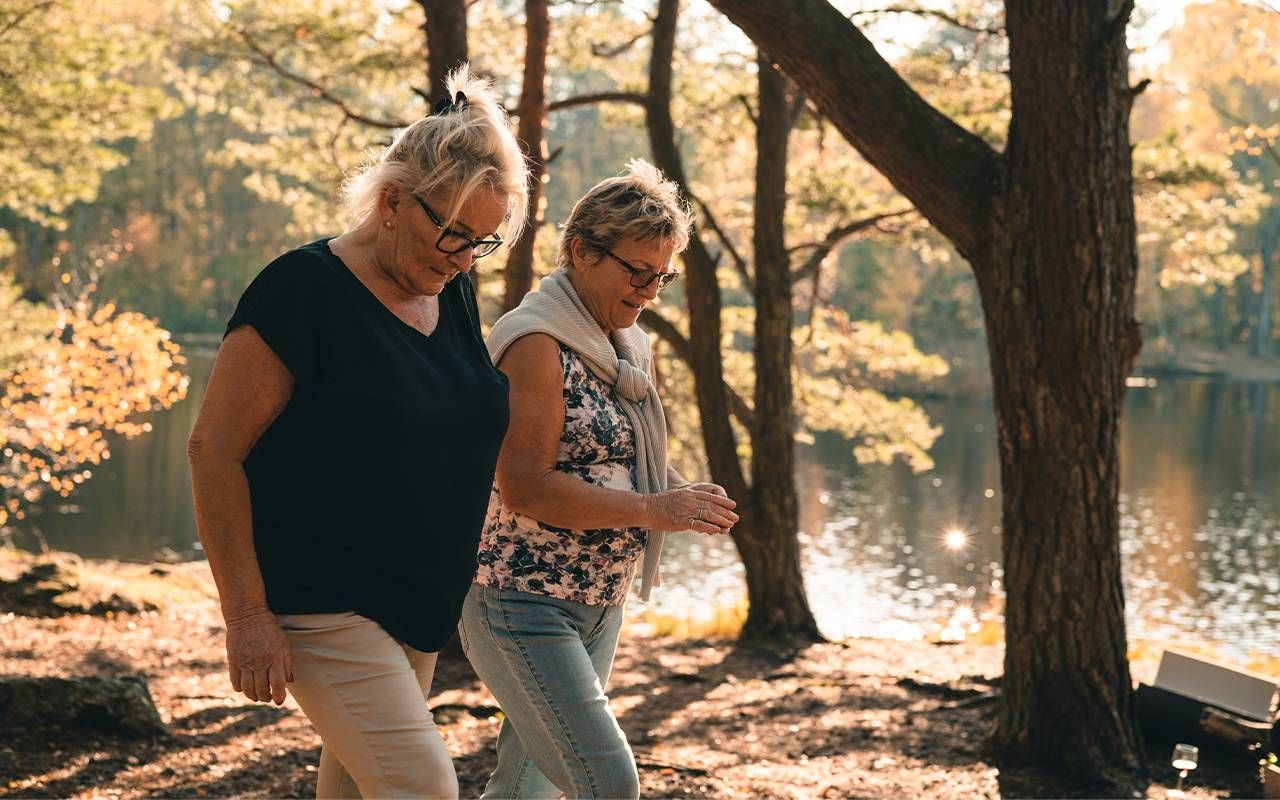Raising Awareness About Suicide and Older Adults
Isolation, pain and grief can be overwhelming — how to recognize the signs that an older adult might need help
Suicide is a public health concern; many people don't realize that some of the highest rates of suicide are among older adults, especially among men.
In 2021, according to the National Institute of Mental Health, while older adults comprise about 12% of the population, they make up approximately 18% of deaths by suicide. According to the American Foundation for Suicide Prevention (AFSP), the suicide rate is highest for middle-aged white men. Overall, in 2020, men died by suicide 3.88 times more frequently than women.

Isolation and Disconnection
Several years ago, I co-authored a book with Christiansburg, Virginia psychologist Johnathan Martin entitled "Isolated and Alone: Therapeutic Interventions for Loneliness."
"People who die by suicide are trying to get rid of the physical and emotional pain they are experiencing."
In the work, Martin wrote: "Loneliness is debilitating. It is a felt sense of isolation, emptiness, worthlessness, and leads to a loss of control which increases personal threat. The social distancing mandate of the COVID era, while understandable from a public health stance, has amplified the problems of being alone. People who have been isolated at home, away from their community and worried about their health and safety are at increased risk for mood and anxiety disorders.
When an older adult is disconnected from others, the feelings associated with loneliness bring a loss of cognitive performance, diminished executive functions, impaired sleep and escalating depression. Social isolation can give rise to feelings of dread, corresponding to a loss of social conformity. This disconnection from others lends itself to unplugging from personal norms and general social and community values. Depression [may seep in] and thoughts of suicide become figural.
People who die by suicide are trying to get rid of the physical and emotional pain they are experiencing. If there was a switch to flip that would end the pain of loneliness, that person would not choose to die by suicide. When someone feels hopeless and lost from others, the option of suicide begins to make sense."
Martin continued, "The pandemic has given us all a glimpse of what many elders' burdens feel like. People have been homebound and isolated, and those who have been sick have felt the loss of health and well-being. I think that about half of the general population can identify as being depressed at some point during the pandemic. Older people know the feeling of loss of safety and of having tried-and-true coping strategies pulled out from under them."
Depression is Not a Natural Part of Aging
In our society, older adults are stereotyped with the idea that it is normal to have pain, to feel alone and to expect multiple deaths around them. Depression is as treatable for an older adult as it is for a teenager. However, elders are not typically screened for depressive symptoms.
Epidemiological studies suggest that well over half of older adults who died by suicide saw their primary care practitioners in the last months of their lives. It is likely they talked to their physicians about physical complaints rather than mental health concerns.
There are benchmarks that suggest an individual is struggling with depression. Symptoms include:
- Loss of interest in hobbies or familiar activities
- Avoidance of social activities
- Episodes of crying or despondency “for no reason”
- Sleep disturbance
- Loss of appetite and an increase in alcohol use
- Feelings of worthlessness
General physical, emotional, and cognitive struggles faced by older adults will lead to feelings of a transitional depression, which over time and left untreated, evolve into a diagnosable mood disorder, characterized by prolonged feelings of sadness, hopelessness, and loss of interest in usual activities of daily living. While most people with a clinical depression do not die by suicide, a major depressive disorder episode does increase the risk.
Risk Factors for Suicidal Intent
There is an old belief that asking a person about their thoughts of hurting or killing themselves, in and of itself, will make them more inclined to do it. This is erroneous; if anything, it is a relief to share such complicated thoughts and feelings.
For those who are more vulnerable, this "age of loss" can be overwhelming and intensify feelings of loneliness and hopelessness.
Potential stressors that may precipitate suicidal behavior include:
- Grief over lost loved ones. Aging causes us all to wrestle with our own mortality and to experience anxiety about dying. For those who are more vulnerable, this “age of loss” can be overwhelming and intensify feelings of loneliness and hopelessness.
- Loss of self-sufficiency. Aging is not for the faint of heart, and older adults who need help with activities of daily living will mourn the progressive loss of independence and vibrancy of youth.
- Chronic illness and pain. Again, loss of mobility compromises the quality of life. Aging requires more physical care as parts wear out. As one man told his physician, “I’m a ‘57 Chevy – cool in all the right ways, but I need a full-time mechanic just to drive down the block.”
- Cognitive impairment. There is tentative research suggesting that older adults with mild cognitive impairment have a higher risk for suicide. Decline in cognitive functioning affects decision-making abilities and increases impulsivity.
- Financial troubles. In this day and age of inflation, older adults living on fixed incomes or without substantive savings may feel the weight of financial stress. The burden of a lack of financial independence is correlated to suicidal thoughts.
Supporting An Older Adult Who is Thinking About Suicide
The National Suicide Prevention Lifeline outlines five action steps that can be taken to help an older adult who is thinking about suicide.
- Ask. Don’t be afraid to be direct with the person at risk. Ask questions like, “How can I help you?” to initiate a conversation in a supportive and unbiased way. Acknowledge their emotional pain and defer from platitudes that “things will get better.” Instead, help the person stay focused on reasons to keep living.
- Be there. Physical presence eases feelings of isolation and provides connectedness. If a face-to-face visit is not possible, consider a Zoom video chat or a phone call. Help the person to identify others who are able to lend their help. A caution is noted here: Don’t make promises that cannot be kept.
- Safety first. Ask if the person has already made attempts on their life. Is there a specific plan that has been constructed? Does the person have access to their planned method of self-harm? Learning the answers to these questions helps to assess immediate danger. In general, the more detailed the suicide plan, the higher the risk. Work with the person to limit their access to lethal means. Someone who is at imminent risk for suicide requires more intensive intervention. Ask them if they are considering suicide. Don’t leave them alone and get help for them.
- Help make connections. Establishment of reliable support systems can alleviate moments of crisis for an older adult considering suicide.
- Follow up. Check in with the depressed elder. This can be done via phone, text, or card. The simple act of reaching out and demonstrating care can mean the difference between life and death.
Help is Available By Calling or Texting 988
If you know an older adult is in immediate danger of taking their life, take them to an emergency room, or call the National Suicide Prevention Lifeline at 800-273-8255. 988 is a new universal dialing code to broaden access to suicide prevention and crisis services. Dialing 988 connects people in crisis directly to the Suicide Prevention Lifeline, where counselors provide free, unbiased, and confidential support 24 hours a day, seven days a week. Dialing 988 is the same as dialing 911 for emergency response. There is no reason to dial any other digits besides those three.
Editor’s note: "Facing Suicide" is a new PBS documentary exploring the personal stories of Americans impacted by suicide, and journeys to the frontlines of medical and scientific research to meet those working to help people at risk. "Facing Suicide," narrated by Josh Charles ("The Good Wife") is streaming on PBS.


